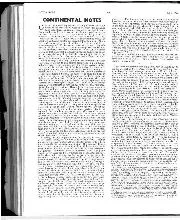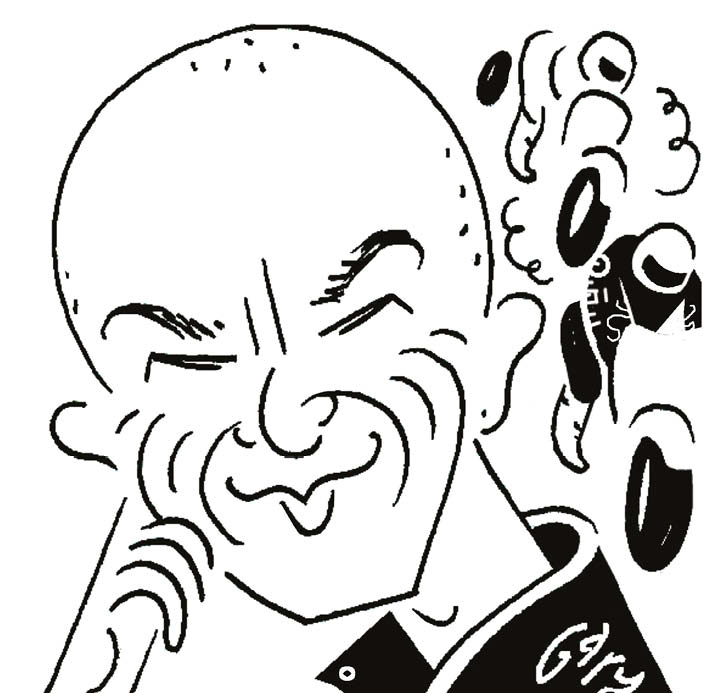
Continental notes, July 1960
One of the interesting features of long-distance sports-car racing is the fact that pit work is necessary, for changing tyres, refuelling, changing drivers, and so on, and it means that…

On March 16 the 78th Daytona 200 takes place. Sadly this classic event is a shadow of its former self, but it does at least still boast the briskest motorcycling lap of all time.
Barry Sheene holds the record for the fastest lap in motorcycle grand prix racing, at 137.1mph around the old Spa-Francorchamps circuit, in July 1977. Peter Hickman holds the Isle of Man TT lap record, with his 135.4mph lap during last June’s Senior TT. Both great feats, but nowhere near as quick as the lap recorded by Californian Gene Romero during qualifying for the 1970 Daytona 200.
Romero rode his 750cc Triumph Trident around the Floridian oval at 157.3mph, bettering Mike Hailwood’s similar BSA triple by 4mph, thanks to a crafty and very risky trick.
“That was the last time we qualified on the full oval, then for the race they’d line us up around the road-racing track,” recalls Romero, who achieved his only Daytona 200 win in 1975. “So when you went out for qualifying it was brand-new territory – we were hitting a part of the track we’d never hit before.
“The first time I went to Daytona in 1967, on the old Triumph twins, we were doing about 135mph down the back straightaway and I’d shut off for the banking. It took me two or three attempts before I held it wide open. The 750 triples were faster, so you were doing 160mph-plus going into the banking. It was very intimidating – at that speed it was like you were riding straight at a wall. Man, you were really going in there, so it was a mind-over-matter thing and, once you had done it, it was OK. On the triple I never rolled off. Once I left the pit lane for qualifying, it was wide open all the way.
“Others would have backed off. I thought ‘I’m riding this sucker out’”
“The funny thing is that I was good friends with a guy called Bill Robertson, who supplied Goodyear tyres at the races. He was neat. He liked us because we were kinda frisky characters, not like normal people, so we ended up hitting it off. We’d go into his shop and bullshit with him. He was always in there gambling, playing gin [rummy] or whatever.
“One day he goes, ‘Hey, Gene, you wanna set pole?’ I go, ‘Yeah!’ He says, ‘Tell you what, this is what you do: you bring me a rear wheel, then after I’ve put this tyre on the rim we’ll put it in the trunk of your rentacar so nobody sees it.’ So I go, ‘OK, where’s the tyre?’ He says, ‘It’s right here, it’s a front tyre and we’re going to put it on the back rim.’ I went, ‘What?’ He says, ‘Yeah, then we’re going to put 75 pounds of air in there’. And I go, ‘Ooh kaay, what’s the guarantee on it?’ He says, ‘About three laps.’ I say, ‘That’s how far I’m going to go!’ No one else had tried it, but Bill had been around racing a long time and he wouldn’t send you down the wrong street.
“So we’re in pit road. My mechanic says, ‘Let’s go!’ I say, ‘Nah, we’ll wait a while, we’ll let the wind die down…’ I gave him all kind of excuses. I wanted the rest of the Triumph and BSA guys to go out ahead of me, because I didn’t want them to see what I was doing, because they’d do it, too. Finally we pull the rear wheel out of the trunk of the car. My mechanic says, ‘You’re shitting me?’ I say, ‘Nope, bolt it on.’ Then he taped up the bike really good, between the windshield and the fairing, which [famed Triumph engineer] Doug Hele had tested in an RAF wind tunnel in England. He even taped up my leathers, to reduce the drag.
“So I took off onto the oval, got her in top gear and everything was noticeably different because the rear tyre was so skinny and we had so much pressure in there, so we had hardly any contact with the asphalt, which was the whole idea, to reduce rolling resistance. They timed us through the speed trap at 166.5mph, pulling somewhere around eighty-five-hundred revs.
“The thing that got your attention was going down the straightaways, especially the back one. The bike was weaving this way and that way at top speed before the banking; it would walk to the left and walk to the right; it had a mind of its own.
“What you did was you didn’t correct it, you just aimed the bike where you wanted it to go and if it veered a little this way or that way, you let it have its head, because if you tried to restrain it, you’d slow yourself down. Anyhow, I got a feel for it, so I said to myself, ‘Hey, here we go.’ I was wide open all the way.
“Using that ribbed front tyre on the rear was a bit crazy. No one else had thought of doing that, but you always wanted to have an edge. Maybe Bill gave me the idea because he thought the other guys would have backed off when the bike started weaving. I just said to myself, ‘I’m going to ride this sucker out.’ I was committed, so it was like, ‘Come on, let’s go!’”
Three laps were indeed the limit – when Romero returned to pit lane the tyre was already disintegrating. He reverted to a regular rear tyre for the race, but was forced off the track on the first lap. He made a stirring comeback, crossing the line just behind winner Dick Mann on Honda’s seminal CB750 four.
Mat Oxley has covered motorcycle racing for many years – and also has the distinction of being an Isle of Man TT winner
Follow Mat on Twitter @matoxley



